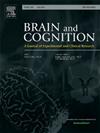A mechanistic understanding of cognitive performance deficits concurrent with vigorous intensity exercise
Abstract
This study aimed to evaluate whether cerebral oxygenation of the prefrontal cortex and associative-dissociative focus while completing the task mediate changes in cognition during exercise. Seventy-five young college-aged adults participated in this within-subjects randomized cross-over two-arm experimental design. During each session, participants completed a Stroop task four separate times: at baseline, two times during the exercise session, and at post-test. The experimental arm session involved participants cycling first at a moderate intensity, followed by cycling at a vigorous intensity. The active control arm session involved participants cycling at a very light intensity to ensure any effects were attributable to the level of exertion rather than the control of motor coordination. Cerebral oxygenation of the prefrontal cortex was assessed using fNIRS, while associate-dissociate attention was assessed using a self-report scale to provide insight into two hypothesized mechanisms which may contribute to alterations in cognition during exercise. Replicating well-established findings, results showed that during vigorous-intensity exercise, accuracy rates decreased for the most cognitively demanding conditions of the Stroop task, while reaction times were generally shorter compared to baseline. Neither shifting of attention in response to the dual-task nor prefrontal cortex oxygenation were observed to mediate cognitive deficits associated with vigorous exercise.

 求助内容:
求助内容: 应助结果提醒方式:
应助结果提醒方式:


